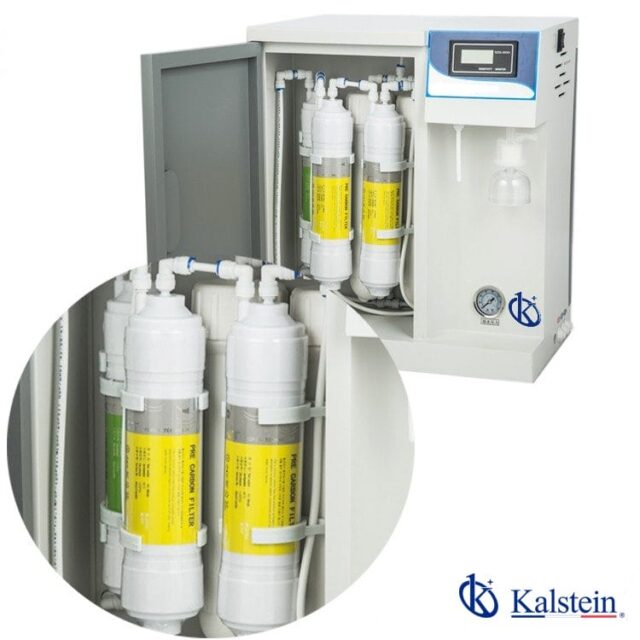Quality water is considered an essential element in the activities of laboratories; this quality condition means that the water is free of impurities. There are different standards that establish the requirements that water must meet, to be used in the laboratory.
The requirements that define the different levels of purity of water are based on physical, chemical and microbiological parameters. These include electrical conductivity, resistivity, carbon content, oxygen, silica and microorganisms.
Water naturally contains calcium and magnesium salts, which contribute to its hardness. In addition, it may contain other elements such as iron, silica, manganese, chlorides, sulfates, sodium and other suspended materials.
Water has multiple applications within the laboratory. For example, it is used in the routine manufacture of standard reagents and solutions, as well as general-purpose chemical and physical tests, such as pH. Likewise, it is required in the bathrooms of Maria, in the washing of the glassware, for the filling of autoclave equipment and in the feeding of devices that produce ultra pure water, among others. However, the presence of substances or elements in water is a factor that limits their use in certain processes. In order to avoid interference and increase the safety of the tests, we must use distilled water.
In practice, all laboratories use distilled water because of its purity and stability, i.e. it is free of contaminants or minerals. This quality allows its use, without affecting the accuracy of laboratory analyzes and experiments, which ensures reliable results.
Distilled water is a product free of microorganisms and possible dissolved contaminants, because it has undergone a highly effective purification treatment, called distillation. This process is done with laboratory equipment called a distiller.
Water distiller
The distiller is a laboratory equipment that performs the purification of drinking water, through consecutive and controlled processes of vaporization and cooling. Vaporization allows water molecules to be separated from other molecules or elements that are diluted.
This device is considered essential equipment in the laboratory and its design varies according to the volumes of water required in the establishment. Generally speaking, it consists of a steam generator or boiling tank, immersion resistors, cooling water outlet, condenser, filter and distilled water tank.
The boiling tank is the reservoir where the water that will be distilled is stored. It has the device that supplies the water to the tank, in addition to controls of level, flow and quality of the feed water.
Immersion resistors are devices that generate heat through electricity. They are covered by a ceramic coating and protected by a metal coating. The cooling water outlet is the component of the distiller, which moves the water used to condense the water vapor. The condenser is the device that allows the vapor to cool and return to the liquid phase.
The filter is located at the outlet of the condenser or collector and serves to remove flavors or particles, present in condensed water. The distilled water tank is where water is collected after distillation.
Advantages of a distiller in the laboratory
- It allows the production of pure water from drinking water routinely supplied by water services.
- Maintains a continuous flow of pure water, in volumes suitable for laboratory operation. This feature is directly linked to your computer’s capacity.
- Offers an automated process.
- It provides a pre-treatment of water for other purification systems, in those laboratories with water requirements, with a higher level of purity.
Kalstein distillers
At Kalstein we offer a wide variety of water distillers, from the YR series. You can choose the one that best suits your needs. Kalstein water distillation equipment works in an automated way, therefore, it is easy to use. They are designed with a glass bucket at the top, which allows the observation of the distillation process. They promote water and energy saving and have a protection system for electric loads and also a protection function in cases where the water supply is reduced or interrupted. For more information about Kalstein distillers, visit the link HERE

